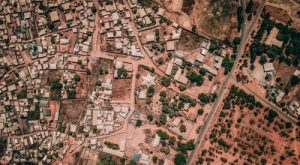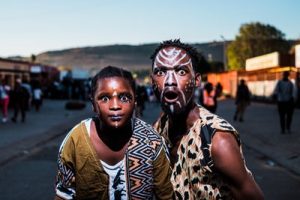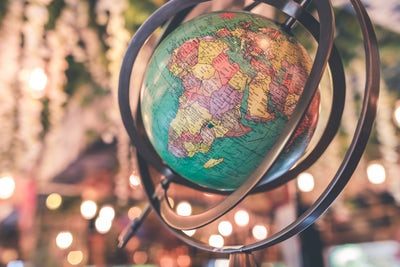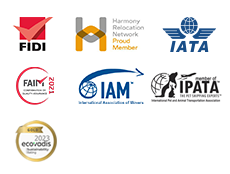Similarities between Brazil and South Africa
If you are looking forward to one day relocating to an international move, you’ll need to do some research. So, buckle up, for international movers Brazil are doing some geography here. If you’re looking forward to moving to either of these countries, you should make sure you know something about them. If you’re in a dilemma, we’re here to tell you about some similarities between Brazil and South Africa. So, without further delay, let us start, shall we?
Similarities between Brazil and South Africa begin with geographical locations
In both of these cases, both countries have wast swaths of marine and offshore territories, and, notably, excellent international freight trade. They also have large, habitable coastlines and lots of foreign trade going on for them. While Brazil takes up the eastern part of South America and most of eastern South American coastline, South Africa is almost a peninsula.
The economy is another one of the similarities between these two countries
Now, keep in mind that these two countries are of different sizes. For that reason, the overall gross domestic product is much higher in Brazil, than it is in South Africa (it’s about $1793 billion for Brazil and 296 billion for South Africa). However, the gross domestic product per capita is similar – $8000 is Brazil and $6000 in South Africa. Their economies are also based in the primary and secondary sector – that is, the agriculture and industry. A liberal economic agenda has gotten both countries out of financial crises, and, although both countries sometimes suffer from recessions, their economies have a long-term stability predicted by numerous natural resources. Both are rich in various forms of metal and agricultural products.

This is how many suburbs look like in both countries – not that much different from North America.
Both have a history of colonialism
If you’re a history buff, you will know that European nations started colonizing Asian, American and African land in the early XVI century. The Spanish and the Portuguese colonized South America, and most of today’s South American nations speak Spanish – with the exception of, of course, Brazil. Brazil has always belonged to the Portuguese. South Africa changed hands several times between the Dutch, the French and the British. Both of these states are post-colonial, and both have overcome the grim challenges of building a functional infrastructure after the troops of the European countries have abandoned their former colonies. Speaking of which…

Just by looking at the map, you can notice some similarities between Brazil and South Africa.
Similarities between Brazil and South Africa include civil rights activism
As we stated, both have a long colonial history. After said colonial history has ended in the early XX century, historical continuum dictated that it had to give way to better and nobler ideals. Slavery in Brazil was abolished in 1888, and in 1834 in South Africa. Obviously, both of these countries have done a lot of improvement on said subject, especially South Africa. It took a long time, however, for South Africa to get rid of the discriminatory system known as Apartheid. Today, both of these countries are free of racial prejudice, and, thankfully, this is history. Which brings us to our next point…
Speak from an ethnic and racial perspective, these places are melting pots
You see, all the intermingling has created an atmosphere in which racial, ethnic and linguistic diversity can thrive. This is one of the main similarities between Brazil and South Africa. Of course, these are different sort of nationalities we’re talking about, but you get the idea. In case of South Africa, the native tribes intermingled with Boers (Dutch descendants), British, the French and the Germans. In case of Brazil, it’s mostly native tribes intermingling with Portuguese and, in some cases, Spanish. The violent past is, fortunately, long gone and these countries are no longer split among racial lines. Both countries also emphasize gender equality as one of the main tenets of their society, which certainly adds a progressive streak to both of them.
Both nations are incredibly culturally rich
When we think of cultural wealth, we usually think of ancient Greece, Rome, China and India. However, that is not always the case. You see, culture is not specific to a single continent, no matter how large it may be. Other cultures have found their way to thrive before the first European settled foot on American soil. Same is the case in South Africa. Similarities between Brazil and South Africa include, but do not end with, a rich culture. We’re not talking about heritage, ancient temples and tombs – what we are talking about is food and dancing, which in both cases wildly increases their potential for tourism. As your international movers Brazil will tell you, dancing and music is a pretty big thing in both of these countries.

Similarities between Brazil and South Africa include a strong sense of culture.
Both of these countries are becoming gentrified at an alarming rate
While being great places to live, they have their own little quirks – what country doesn’t? In both of these cases, it’s gentrification. It’s not bad, in and by itself – it allows the economy to crow and tax revenue is there to be collected. If you’re, for example, moving to Brazil from Canada, the first thing you’ll notice is that Rio de Janeiro is nothing like Toronto. Or Johannesburg, for that matter. You will constantly see demolished buildings, and new ones taking their place. Sometimes, however, it makes the city unsustainable, especially during a dry season or a periodical disease outbreak. This doesn’t mean you should go there – you absolutely should. Every society deals with problems. It’s just an avoidable part of human nature. Their problems are, however, much different from ours.
These are not the only similarities between Brazil and South Africa. To truly get to know what they are, you should visit both countries. Only then will an individual be able to judge how different, yet eerily similar they are.




